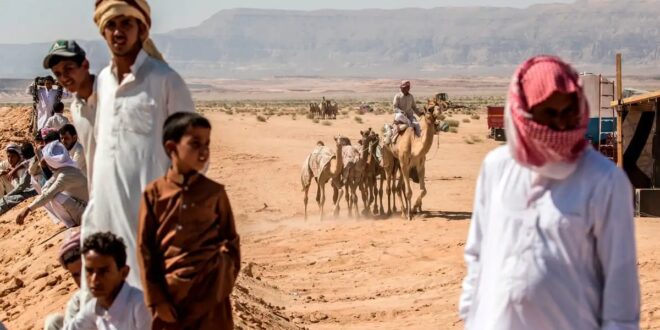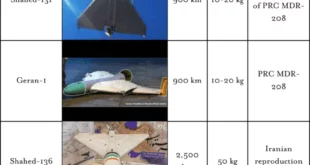Egyptian Sinai has returned to the forefront of the conflict between the Palestinian Resistance and the Israeli occupation, with the circulation of plans that include the displacement of the residents of the Gaza Strip there, in exchange for a huge financial deal with Egyptian President Abdel Fattah Al-Sisi’s regime.
Despite the repeated denials issued by sovereign Egyptian circles regarding the rejection of these plans and the liquidation of the Palestinian cause, the stifling economic crisis that the country is going through, and Al-Sisi’s desire to secure a third presidential term extending until the year 2030, may mean Cairo is willing to make concessions.
Through various platforms, the Israeli army continues to direct requests to the Palestinians to evacuate the northern part of the Gaza Strip and head south towards the Rafah border area with Egypt. This signals an attempt to impose the option of mass displacement and push the residents of the Gaza Strip towards Egyptian territory.
Resettlement plan
Similar to the resettlement of Palestinian refugees in Jordan, Lebanon and Syria, the Israeli proposal is based on a reality that was previously imposed in neighbouring countries, and the experience can be replicated again in cooperation with Egypt, in exchange for erasing its foreign debts, which are approaching the $165 billion mark according to government data.
The Israeli journalist, known for being close to the Mossad, Edy Cohen, promoted this plan, saying in a post on his X (formerly Twitter) page, “Settlement of Palestinians in Sinai in exchange for eliminating Egypt’s foreign debts. Think about it.”
Cohen later said, in a telephone interview with Monte-Carlo Doualiya radio, that it is unlikely that Egypt would reject this solution because of its economic crisis and the possibility of American support for the idea, stressing that Egypt will receive payment and financial compensation for settling Palestinians in Sinai.
US National Security Advisor, Jake Sullivan, had previously stated that Washington held consultations with Egypt regarding allowing Palestinian refugees to enter Sinai (with an area of about 61,000 square kilometres, making up approximately 6 per cent of Egypt’s area).
In a public reference to the official circulation of the proposal with Egypt, Al-Sisi said, during the press conference held last Wednesday, with German Chancellor, Olaf Scholz, in Cairo, “If Israel is thinking of displacement as a solution, there is the Negev Desert in Israel, where they can transfer the Palestinians to until Israel finishes its announced military operation against armed groups, and then return them.”
Rafah is empty
The proposal to displace Palestinians to Sinai is not the first of its kind. Rather, the proposal has been presented to former Egyptian presidents in the past, since the 1950s, but the idea failed. However, it is different this time because of the critical variables that may pave the way for the implementation of the plan.
The first variable is the significant growth in the strength of the Hamas Movement, and it dealing a painful and harsh blow to the Israeli army in Operation Al-Aqsa Flood on 7 October. This is a variable that terrifies Tel Aviv and its ally, Cairo, which sees the Movement as an extension of the Brotherhood, whose President, Mohamed Morsi, was overthrown from power, in the coup on 3 July, 2013.
The second variable that prompts the Israeli desire to implement this plan is that the Egyptian Rafah is virtually empty of residents, as are large parts of the city of Sheikh Zuweid, as a result of the Egyptian army’s attempt to empty the two cities of their residents over the past 10 years. This was done under the pretext of war on the Sinai Province organisation (the local branch of Daesh).
In this case, Rafah would be a suitable alternative for the residents of Gaza, creating a geographical extension of the Gaza Strip into Egyptian territory, thus emptying the Gaza Strip of its residents. This is something that was repeated in the past in a “partial” and “temporary” manner twice, first in 2005, during which 100,000 Palestinians crossed. The second time was in 2008, when 750,000 Palestinians crossed the wall separating Egypt and Gaza and rushed to Sinai to obtain food and fuel. In both cases, the presence of the Palestinians did not last for more than a week.
The chief spokesman for the Israeli army, Lieutenant-Colonel, Richard Hecht, was franker in presenting the Israeli plan, saying, “Rafah crossing is still open. Anyone who can get out, I would advise them to get out.”
The Egyptian border with the Gaza Strip is 12 kilometres long and is connected through the Rafah land crossing. This is the only crossing not controlled by Israel between the Gaza Strip and the outside world and is the only outlet for about 2.3 million people residing in the Gaza Strip, which has been besieged by Israel since 2007.
Financial incentives
According to Palestinian writer, Abdel Bari Atwan, in his recent tour of the region, US Secretary of State Anthony Blinken carried the option of directing refugees to a tent city in the Yamit area (located between Rafah and Arish in Egypt), that would later turn into residential buildings. The plan is for a Gulf country to finance this operation, but the offer was rejected by Egypt.
America’s Wall Street Journal also quoted officials as saying that the Gulf states have proposed the idea of granting Egypt financial aid in exchange for accepting Palestinian refugees.
Senior security and diplomatic sources confirmed to Mada Masr news site, without revealing their identity, that “various international parties have discussed various incentives with Egypt for it in exchange for accepting any Palestinian exodus towards Sinai, and there is an inclination within political decision-making circles in Cairo to agree.” This report disturbed official circles, forcing them to deny it and investigate the officials of the news site on charges of publishing inflammatory reports to harm Egyptian national security.
An Egyptian political expert, who asked to remain anonymous, believes that Egypt is in a dilemma between trying to benefit from the Gaza crisis to solve its economic problems and reduce its debts, which was the case with the late President Hosni Mubarak when he accepted participation in the Gulf War (1990-1991) in exchange for reducing Egypt’s debts to half, and between accepting something that poses a threat to its national security, i.e. accepting the American plan to set up tents in Sinai for the Palestinians until Israel eliminates Hamas and then returns them to the Gaza Strip.
The political expert added in his interview with Middle East Monitor, “if Egypt accepts the resettlement plan, it will accept a potential danger that may be represented by the Palestinians carrying out activities from Sinai against the Occupation, putting Egypt and Israel in a new war. This will also risk increasing the anger and internal tension and accusing Cairo of colluding with the West to liquidate the Palestinian issue.
Position of authority
Despite the Egyptian rejection of the circulating plan, the ferocity of the Israeli bombing of northern Gaza, and the preparation for a ground invasion, may push the residents of the Gaza Strip into a forced exodus towards Egyptian Rafah, which shows the Al-Sisi regime as supportive of the Palestinians, and that it has opened the borders to shelter and support them.
The Egyptian regime may pass part of the terms of the deal, and not the entire deal, by repeating what happened in 2005 and 2008, in a way that achieves three valuable goals: the first is to destroy the Hamas Movement; the second is to obtain a generous aid package, and the third is to restore the Fatah Authority and the Palestinian Authority’s custodianship over the Gaza Strip again.
According to an official Egyptian government source, instructions were received by the North Sinai Governorate to set up tents in the cities of Rafah and Sheikh Zuweid (North Sinai), in the event that the border is crossed, while imposing security cordons to prevent infiltration, according to reports by the Mada Masr website.
Regarding the chances of implementing this plan, political researcher, Hamdi Al-Masry, believes that Al-Sisi being at the top of the pyramid of power in Egypt may allow for the implementation of this plan, despite the strong opposition from the Egyptian State and its institutions.
Al-Masry bases his opinion on the fact that there are factors that must be taken into consideration, most notably the special relationship and unprecedented cooperation between Al-Sisi’s regime and Israel, it playing a key role in the siege of the Gaza Strip, the fragility of the political situation in Egypt and the escalating economic crisis in the country. His regime needs American and Western support to overcome its economic crises and the collapse of its local currency and, therefore, it is easy to put this regime under pressure in order to remain in power until 2030.
Observers fear that Egyptian officials will salivate over the price that will be paid in the resettlement deal, similar to what happened when the islands of Tiran and Sanafir in the Red Sea were ceded to Saudi Arabia, in exchange for grants and aid packages, in June 2017.
 Eurasia Press & News
Eurasia Press & News



